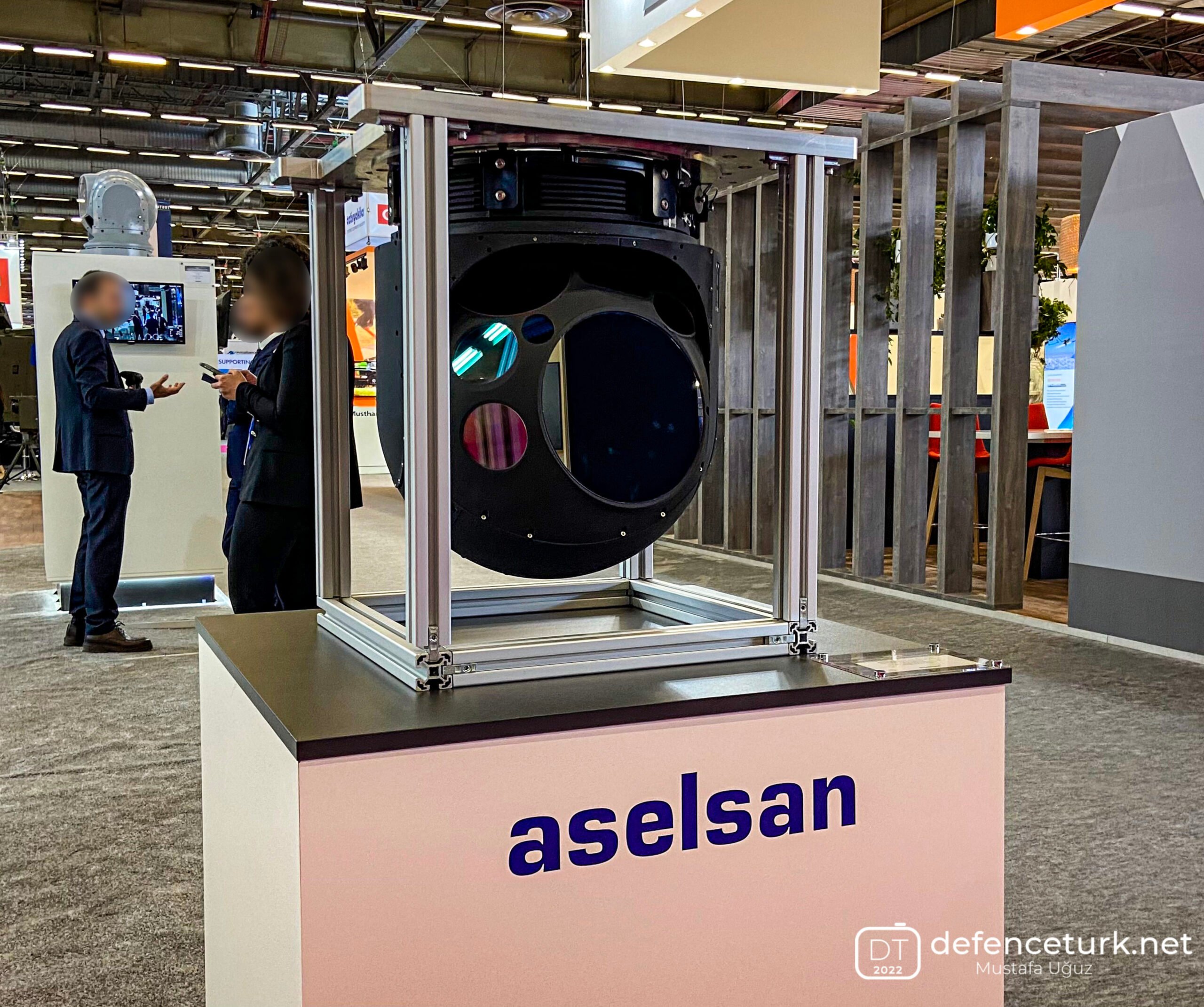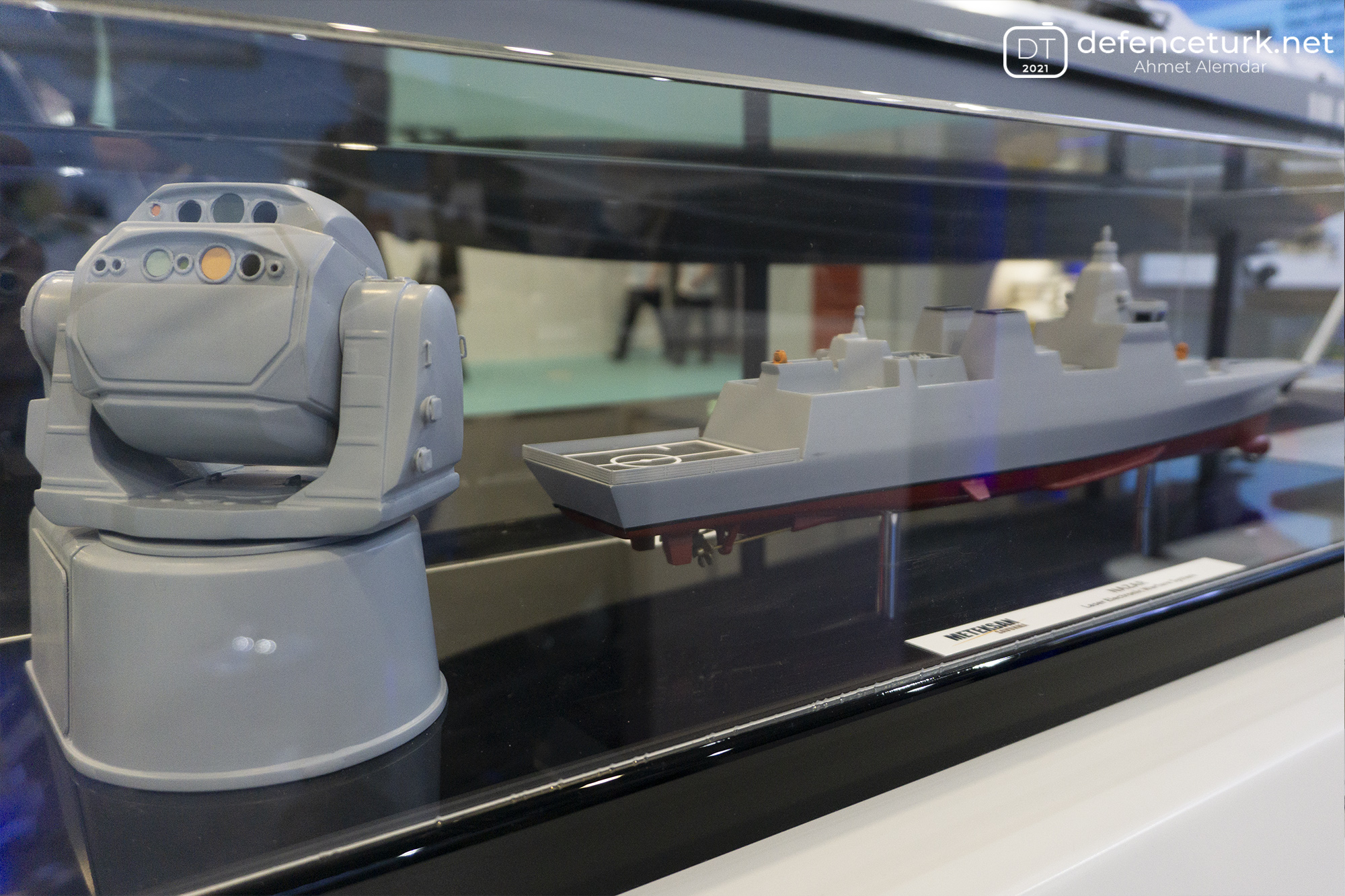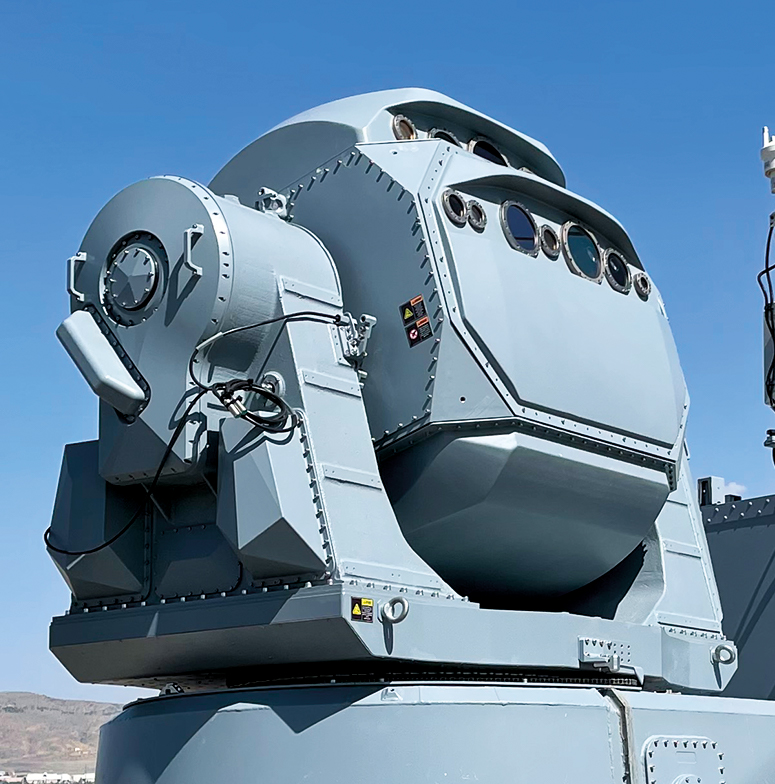ASELSAN weapon located RADAR enters service of Turkish Land Forces, it is a GAN AESA radar that can detect mortars, rockets etc from 100km away .
How to install the app on iOS
Follow along with the video below to see how to install our site as a web app on your home screen.
Note: This feature may not be available in some browsers.
You are using an out of date browser. It may not display this or other websites correctly.
You should upgrade or use an alternative browser.
You should upgrade or use an alternative browser.
Turkish Sensor and Detector Programs
- Thread starter cabatli_53
- Start date
dBSPL
SENIOR MEMBER

- Joined
- Mar 2, 2018
- Messages
- 7,656
- Reaction score
- 28
- Country
- Location
dBSPL
SENIOR MEMBER

- Joined
- Mar 2, 2018
- Messages
- 7,656
- Reaction score
- 28
- Country
- Location
TCG Ufuk ( Horizon in tur. ) A591 will be put into service with a ceremony on January 14th.
via https://twitter.com/miguyan2000

photo: https://twitter.com/oeroguz
via https://twitter.com/miguyan2000

photo: https://twitter.com/oeroguz
aziqbal
SENIOR MEMBER

- Joined
- Aug 26, 2010
- Messages
- 7,388
- Reaction score
- -10
- Country
- Location
impressive
lets hope it can be collecting electronic signatures from S400 in Syria
dBSPL
SENIOR MEMBER

- Joined
- Mar 2, 2018
- Messages
- 7,656
- Reaction score
- 28
- Country
- Location
I don't think there is such a need for the S-400s.impressive
lets hope it can be collecting electronic signatures from S400 in Syria
Path-Finder
ELITE MEMBER

- Joined
- Feb 7, 2013
- Messages
- 24,366
- Reaction score
- 1
- Country
- Location
Domestic Wide Area Surveillance Solution of Our Domestic Aircraft: MİLSAR

Unmanned aerial vehicles (UAVs) have significantly changed the way the armed forces fight, especially against asymmetric threats. This change mostly continues with the increase in the capabilities of the payloads of the UAVs. Operating in the field of sensors, our Company offers advanced radar technologies to tactical class and higher segment UAVs with the new member of the weather radar family, MILSAR.
MILSAR is a multifunctional radar with synthetic aperture (Synthetic Aperture Radar / SAR) and moving target detection (Ground Moving Target Indicator / GMTI) modes. SAR and GMTI capable radars are indispensable sensors for reconnaissance and surveillance aircraft and satellites, as they can continue to provide high resolution images even in weather conditions where electro-optical sensors are ineffective. The GMTI feature comes into play by reducing the detection time with electro-optical sensors, which is one of the main reasons why UAVs stay in the air for hours, and by detecting activities of interest in a shorter time. However, the size, weight and power consumption needs of these radars generally prevent their use in small-sized UAVs. At this point, MİLSAR; thanks to its size, weight, 360-degree scanning and power consumption features,
MILSAR Instead of Electro-Optical Sensor
The dimensions and architecture of MILSAR have been determined in a way that allows the radar to be installed in place of the electro-optical payloads commonly used in UAVs. It has the same mechanical interface as the MILSAR standard 15” EO/IR sensor turret. In this way, the electro-optical payload can be easily removed and replaced with MILSAR. On the other hand, it emerges as an important alternative that can replace and support EO/IR cameras in cases where EO/IR cameras are limited, such as the need to not lose resolution in viewing from long distances and to perform wide area surveillance in high resolution.
All the components of MILSAR are integrated in a single unit. This compact structure and compatibility with the size and weight of existing electro-optical sensors greatly facilitate the integration of the radar into different UAVs. When 360-degree scanning is desired with phased array SAR/GMTI radars, radar must be installed in many parts of the platform. This negatively affects the airtime and payload capacity of the UAV. Instead of phased array SAR/GMTI radars, which have costs comparable to those of tactical-level unmanned aerial vehicle platforms, 360-degree scanning and cost-effective solutions seem to fill an important gap in the SAR/GMTI radar segmentation. MILSAR was designed with these constraints in mind. MİLSAR, its weight of 30 kg,
One of the capabilities that MILSAR has brought to the UAVs is the opportunity to observe independent of weather conditions. With its SAR feature, MİLSAR creates high resolution images independent of distance. Like other SAR systems, MILSAR can operate in either strip or spot modes. In strip mode, the radar produces images with a resolution of 1 m and can display them fluently to the operator, like a video image. The bandwidth required for the transmission of images to the ground station is also compatible with existing UAV data links. When Meteksan Defense's newly developed C-Band Data Link is used, the bandwidth that can be allocated increases even more.
In spot mode, MILSAR can create an image of the target area with a resolution of 30 cm. These images are mostly used for intelligence purposes. Meteksan Defense is also working on “Coherent Change Detection” with Bilkent University. This feature is used to compare the current images with the previously taken images and to reveal the changes. Thus, for example, the presence of a hand-made explosive planted by terrorists can be detected.
MILSAR can produce images itself during the mission and prepare them for display to the operator. The system includes an image processing software on the ground. Change Detection Feature will run on this software.
Thanks to its GMTI feature, MILSAR can also track targets on the ground and thus has the potential to be used as a fire control radar. However, images from the electro-optical sensor are needed for positive identification of the target. The system will also have the optional modes DMTI (Dismounted Moving Target Indication / Separated Moving Target Detection) for tracking individual targets and MMTI (Maritime Moving Target Indication / Marine Moving Target Detection) for marine targets.
Yerli Hava Araçlarımızın Yerli Geniş Alan Gözetleme Çözümü: MİLSAR | Meteksan Savunma | Meteksan
İnsansız hava araçları (İHA’lar), silahlı kuvvetlerin, özellikle asimetrik tehditlere karşı mücadele şeklini önemli ölçüde değiştirdi. Bu değişim, çoğunlukla İHA’ların faydalı yüklerinin yeteneklerinin artması ile devam ediyor.
Path-Finder
ELITE MEMBER

- Joined
- Feb 7, 2013
- Messages
- 24,366
- Reaction score
- 1
- Country
- Location
I heard that Turkey was developing a pod similar to this! is this true?
dBSPL
SENIOR MEMBER

- Joined
- Mar 2, 2018
- Messages
- 7,656
- Reaction score
- 28
- Country
- Location
Finally someone did this inventory study.
List of domestically designed, land and air-based, non-CM, electronic warfare systems' list

For other great works, you can visit:
List of domestically designed, land and air-based, non-CM, electronic warfare systems' list

For other great works, you can visit:
Path-Finder
ELITE MEMBER

- Joined
- Feb 7, 2013
- Messages
- 24,366
- Reaction score
- 1
- Country
- Location
New alternative camera system to SİHAs MEROPS showcased at Eurosatory 2022
Jun 13, 2022 11:42
Category: News , Air Force and Space Systems
A A

MEROPS, the new electro-optical reconnaissance, surveillance and targeting system developed by ASELSAN, was exhibited at the Eurosatory 2022 fair in Paris, the capital of France. MEROPS, which is stated to be a more performance product than CATS, is planned to be used in higher flying aircraft.
According to the information obtained by Defense Turk, MEROPS weighs around 50 kg, with 5 kg lighter than CATS. In terms of performance, MEROPS can detect the target at ranges of around 20 km, which CATS can detect at 12-15 km. The product includes laser marking, laser distance meter, laser lighting systems.

In the statement made by an ASELSAN official, it was stated that the product can perform better in bad weather conditions, especially compared to previous generation products. The product's promotional card included the phrase "Crystal Clear Image in All Weather Conditions".
It is stated that MEROPS can technically be used in fixed-wing manned and unmanned aerial vehicles such as HÜRKUŞ, ANKA, AKSUNGUR, TB2, AKINCI, and helicopters such as ATAK II.
There are MWIR and SWIR cameras as thermal cameras in MEROPS. By keeping the ratio of diameter to focal length small, clearer images were tried to be obtained at long distances.
ASELFLIR R-400D Electro Optical Reconnaissance and Surveillance System, which is planned to be used in the GÖKBEY domestic utility helicopter, was exhibited for the first time at the EFES-2022 Combined Joint Firefighting Field Exercise held last week . Again, according to the information obtained by Defense Turk in the past weeks, it was shared that since ASELSAN CATS did not give the expected performance, the ASELFLIR-200 electro-optical imaging systems of MELTEM type maritime patrol aircraft would be replaced with the domestic F-500C electro-optical system .
Path-Finder
ELITE MEMBER

- Joined
- Feb 7, 2013
- Messages
- 24,366
- Reaction score
- 1
- Country
- Location
NAZAR's first prototype will be delivered in September
The first prototype of NAZAR, developed by Meteksan Defense, will be delivered to the Naval Forces in September 2022.
According to the information in the 2022 Institutional Financial Status and Expectations Report published by the Ministry of National Defense of the Republic of Turkey, the Land-Deployed Multi-Band Laser Electronic Attack System Prototype-1 of the Thulium-Doped Fiber Laser Technology Development (NAZAR) R&D Project will be implemented in the Marine Corps in September 2022. It is planned to be handed over to the Forces Command.

Evil Eye System
The NAZAR Land System, developed within the scope of the 1st Phase of the NAZAR Project, signed between the Presidency of the Republic of Turkey, Defense Industry Presidency and Meteksan Defense in recent years, was exhibited for the first time at the Meteksan Defense stand at the IDEF 2021 Fair. The NAZAR Land System basically provides broadband state-of-the-art laser functional destruction capability against EO/IR guided missiles to protect critical bases and facilities.The NAZAR Project, which contains a technology that very few countries in the world work on, is shown as a very critical project for our country with its laser functional destruction capability. The system has been developed with the capability of detecting EO and IR guided projectiles and applying directed laser dazzle and functional destruction techniques against such bullets. Thus, it will be possible to neutralize EO/IR guided missiles from long distances.


NAZAR has been developed not only to be effective against known EO/IR guided missiles, but also to have reconnaissance and surveillance features that will provide an advantage against asymmetric threats thanks to its broadband operation capability. The system will also be able to work in integration with other sensors and systems to increase overall efficiency.
In the first stage, NAZAR will be used on a mobile platform by being easily transported to the desired positions in accordance with the operational needs. While the electricity needed for the operation of the system is provided by its own generator, there is no need for an external power source.
After the Land System developed in Phase 1 of the NAZAR Project, necessary modifications will be made to increase the Defense Against Guided Bullets (GMKS) capabilities of warships and will be deployed to military ships. It can also be used as a testing and training aid for the development, testing and evaluation of laser dazzling and functional destruction techniques.


NAZAR’ın ilk prototipi Eylül ayında teslim edilecek
Meteksan Savunma tarafından geliştirilen NAZAR'ın ilk prototipi 2022 yılının Eylül ayında Deniz Kuvvetlerine teslim edilecek. T.C. Milli Savunma Bakanlığı tarafından
 www.defenceturk.net
www.defenceturk.net
Similar threads
- Replies
- 1
- Views
- 6K

